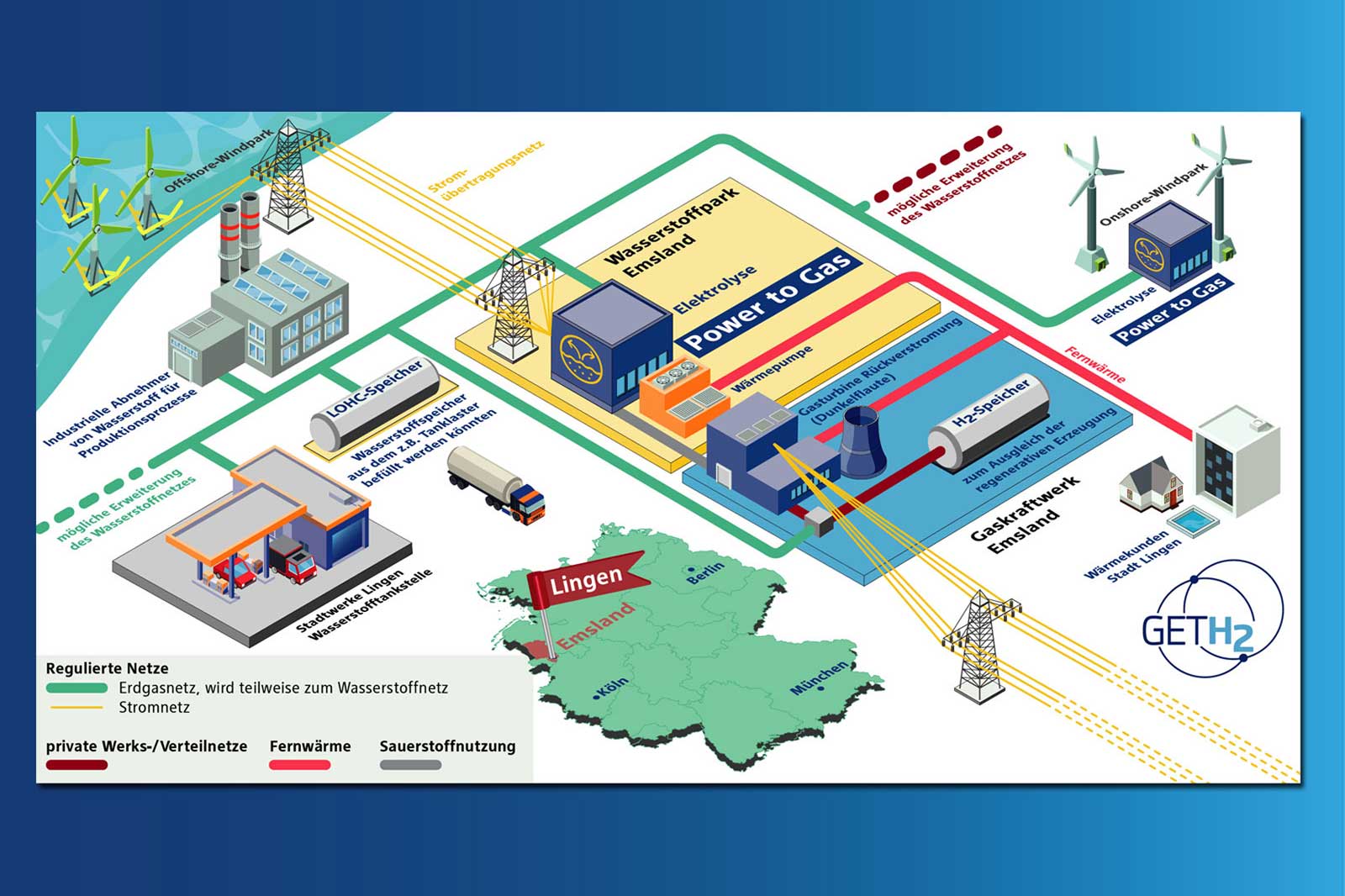RWE and ARC marine celebrate milestone success in promoting marine biodiversity with eco-engineered scour protection at Rampion Offshore Wind Farm
08.07.2025

Newsfacts:
Using hydrogen to advance the energy transition is the objective of the GET H2 initiative in which RWE Generation SE, Siemens, ENERTRAG, Stadtwerke Lingen, Hydrogenious Technologies, Nowega, Forschungszentrum Jülich and IKEM – Institut für Klimaschutz, Energie und Mobilität (Institute for Climate Protection, Energy and Mobility) have joined forces. Their first sub-project involves setting up a hydrogen infrastructure in the Emsland region, which links the energy, industrial, transport and heat sectors across the entire value chain. Core elements include the construction of a power-to-gas unit with a capacity of 105 MW, that converts electricity from wind power into “green hydrogen”, the transport and storage of the pure hydrogen in existing infrastructures and hydrogen usage.
With this first project, the companies are participating in the “Reallabore der Energiewende” (Real-World Laboratories for the Energy Transition) ideas competition initiated by the German Federal Ministry of Economics. They submitted a project outline to the ministry on 5 April. A decision is expected by the end of June. The companies are planning to start implementing the project two years from now.
“Renewables, electricity and gas pipelines, gas storage systems, the conventional liquid fuel infrastructure and even purchasers of hydrogen and waste heat in the chemicals industry are already available in the region so that we have ideal conditions for this innovative technology and for quick project implementation. In Lingen, we are able to demonstrate the entire value chain on an industrial scale and have considerable potential for synergies thanks to the existing infrastructure,” Roger Miesen, CEO of RWE Generation, explained.
Hydrogen is an essential component in a successful energy transition. Electrolysis on the basis of renewables will play a key role. Power from solar and wind energy can be used to electrolyse water and produce “green hydrogen”, an energy carrier which can make a significant contribution to cutting carbon emissions in areas other than the power industry. Hydrogen can constitute a decisive step towards climate compatibility for energy- intensive industries, such as the steel and chemicals industries. Moreover, hydrogen provides the opportunity to store vast amounts of renewable energy in existing storage caverns.
“It is crucial now to not only test this technology in small R&D projects but to scale it up in larger projects in a holistic approach. This is one of the objectives of our project. In conjunction with the existing pipeline network, the project may be the beginning of a new hydrogen infrastructure in Lower Saxony and North Rhine-Westphalia which can give an important impetus to the German and European hydrogen infrastructure,” said Jörg Müller, Managing Director of ENERTRAG, when describing future prospects.
“This is a unique project world-wide which demonstrates the possibility of using power from renewables to produce green hydrogen for other sectors (“sector coupling”) at an industrial scale. In particular, the sensible use of existing infrastructure and re-electrification of 100% hydrogen in a 60-MW gas turbine make this project a unique showcase for power generation,” Prof. Dr. Thomas Thiemann, Head of the Energy Transition Teams of Siemens, added.
The project’s realisation is subject to its economic viability.